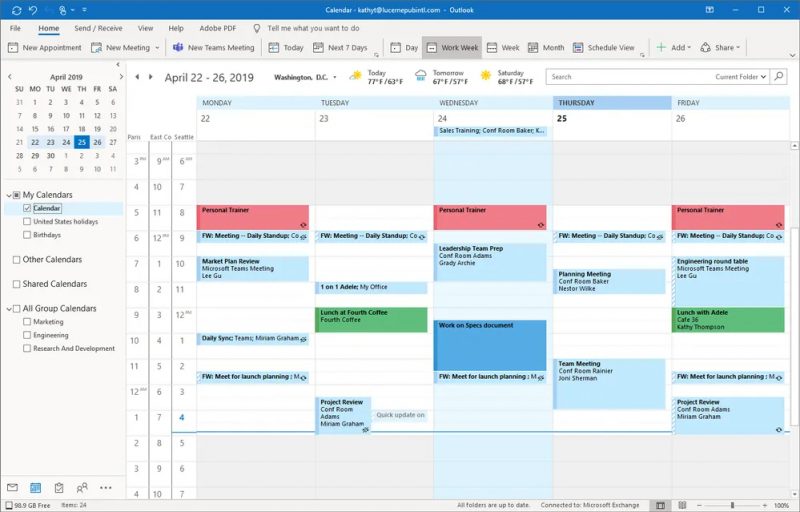How to run effective meetings with no experience: 10 research-based tips
Published by Pavel Nakonechnyy on (updated: ) in Leadership and Soft Skills.I bet every one of you has ever asked the question “Why does this meeting take so long?” Meetings are exhausting. It was a problem before the pandemic, it has become an even bigger problem for remote meetings. You would never want important customers or stakeholders to feel the meeting was a waste of time.
Running meetings right can result in better decision-making and increased innovation, cohesion, agility, and resilience. They are essential to thrive in competitive markets in the time of the pandemic. Meetings together with written communications are the best ways to control the projects.
In this article, I’ll share research-based insights and tips on how to make your meetings more effective, well-used and engaging.
1. Stick to one meeting type. According to Seth Godin, there are three kinds of meetings:
a. Information: a meeting in which the participants are informed about something.
b. Discussion: a meeting which aims to give input or direction, or to receive feedback.
c. Permission: a meeting in which one side proposes something, in the hope that the other approves it.
Often participants of the same meeting don’t align with their goals for the meeting. It causes misunderstanding and time waste.
2. Limit meeting time. Parkinson’s Law states that Work expands to fill the time available for its completion (and not according to how complex it is). It makes perfect sense to limit the time of meetings. The standard time slot for a meeting is 30 minutes. It allows participants to discuss a topic or two, but not waste time going off-topic. I’d recommend you never run a meeting much longer than it was planned for even if other participants can stay for longer.

3. The question rule. There are three types of questions asked in a meeting:
- Comprehension questions
- Questions to support the process (e.g. to ensure everyone understands what you are talking about),
- Debate questions (that present a challenge).
All three types are legitimate, but they should come in the exact order to achieve the maximum benefit of the conversation.
4. Share agenda preemptively. The best thing you can do to run an effective meeting – is not to run one. If your problem can be resolved async via email – you should do it. The agenda for the meeting allows your colleagues to prepare for the meeting and to give you an answer in an async manner. Why spend half an hour on the phone if there were no questions after a written inquiry.
5. Inform your colleagues if you expect them to do something in the meeting. If you plan a meeting to get a sample of customers’ information because you don’t have the right access – communicate it explicitly. There’s nothing worse than coming to a call where no one can help you because they don’t have the access either.
Choose the right participants. There’s little value to inviting people who aren’t directly related to the conversation. If you are unsure whether person X can help you with subject Y, I suggest you describe the expected roles & responsibilities for the participants. Remote meetings plummet in quality as size increases.
If you are unsure how you can help a meeting organized by someone else – ask for an explanation. You can save both yourself and your colleagues time with the right question.
7. Log key insights and results. Remote meetings can be easily recorded and shared with your peers. But it can be inefficient for them to listen to the whole conversation. It’s much better to share concise meeting notes with key ideas, problems, actions and results discussed in a meeting.
8. Utilize all the available time. If someone is a little late, don’t wait for the colleague in total silence. Instead, use that time to reiterate the background information and key goals of the meeting with participants who have already joined.
9. Actively facilitate. This is key in remote meetings. Meeting leaders must embrace the role of facilitator. Draw in virtual attendees (for example, “Sarah, please share your thoughts”) to keep them engaged. You might even consider keeping a tally to be sure all are contributing and all voices are heard, as some successful professors do. Avoid the generic question, “Any questions?” Instead, call on people specifically. Lastly, don’t let people ramble or go off course; kindly interrupting, if necessary, is your job as a meeting leader.
10. End meetings well. With a few minutes left, be sure to clarify the takeaways. Identify the people or groups responsible for each action item. Don’t let anyone leave your meeting wondering what was accomplished or what the next steps are.
Most of this advice will become natural to you with experience. But for now, I suggest you note these tips to check every time you set up a call.
Source: The Surprising Science of Meetings: How You Can Lead Your Team to Peak Performance (Oxford University Press, 2019).